- Home
- Allison Brennan
Nothing to Hide Page 7
Nothing to Hide Read online
Page 7
“Carson is being prosecuted to the fullest extent of the law. He’s not going to be free for a long time.”
“He started it!” Jesse shouted. Then, somewhat calmer, he said, “If he didn’t hate my dad so much, he would never have hired someone to kill him, and Mr. Robertson would never have got the idea to kidnap me and my mom and blackmail him. It’s Carson’s fault my mom is dead.”
“You know, it might help you and Sean to talk to someone about all this.”
“I am. I’m talking to you. Oh.” He paused, bit his lip. “I don’t want to talk to a stranger.”
“Psychologists are trained to help people work through situations like this. You were put in the middle of an awful situation. None of it was your fault. You didn’t do anything wrong. When people you love and trust let you down, when they do things that hurt you, it’s natural to be angry and conflicted. Plus, you’re grieving. It’s hard to work through all of that on your own.”
“I don’t want to talk to anyone,” he said. “Do you not want to talk about it? Does it bother you to talk?”
“Not at all,” she said, surprised at his empathy that she might have difficulty with any of this. “You want to talk to me about anything, I’m here. About anything, I mean that. Okay?”
“Okay.” They were in the church parking lot, but Lucy left the car on for a minute.
She said, “Sean is working through his own feelings of anger and guilt right now, and that makes it seem like he’s sad. Just knowing that you’re adjusting to everything, that you’re happy here, that’s all that he cares about. If you want to talk about your mom, it’s okay. It won’t upset him. He cared about her at one time, and he loves you.”
“Do you hate her?” he asked quietly.
“No.”
“Why? After everything she did, why don’t you hate her?”
Lucy wondered if Jesse was really thinking about Sean, and using her as a surrogate. Maybe that was why he was having a difficult time talking about his mother to them.
“Your mother loved you. You know she loved you more than anything. She made mistakes, there’s no denying that, but she loved you and she did what she thought was the best thing for you—and for her—at the time. And honestly, I find it takes far too much energy to hate people.”
“What about the people you put in prison? What about the people like the guy who forced Michael and the boys to work for him and kept them locked up? Or Carson who hired a guy to kill Sean? I hate Carson. And I don’t feel bad that I hate him.”
“Just because I don’t hate them doesn’t mean I like them. And I take great comfort in the fact that my job is to put people who commit crimes in prison. They’re being punished, I don’t need to waste emotions on them. You know, Jess, I’m not a saint. It took me a long time to learn how to forgive people. And I’ll admit, sometimes it’s much harder than other times. Sometimes, I reflect on the past and I get angry or upset all over again. That’s why I work really hard not to live in the past.”
“I’m never forgiving Carson.”
“I understand why you feel that way now.”
“I’m not going to change my mind.”
It wouldn’t do Lucy any good to tell Jesse that time would help. And with something like this … well, maybe it was better for him to put all the blame on his stepfather and none on his mother, though she thought part of Jesse’s angst was that he had learned after his mother died that she had known about his stepfather’s illegal activities and had—in some ways—condoned and helped him.
“You have to figure this out for yourself, but that doesn’t mean you have to figure it out by yourself,” she said. “I don’t want you to harbor anger, because it’s not good for you. Just because you forgive someone for things they did to you or someone you love doesn’t mean you have to like them or even respect them. Forgiveness is about you, not them. It’s about giving yourself peace, not granting peace to others.”
“I know,” he said, but in a tone that made her think he didn’t agree with her. Which was fine. All she could do was give him advice that had once helped her—he would find his own path.
Deep down, she felt like a hypocrite. She had done some truly awful things and didn’t regret them. She had killed her rapist in cold blood. And while she did believe that hate was exhausting, she still hated the man, even though he was long dead and buried. The difference now was that she could live a relatively normal life. She might never be normal—but she had a good life. A life filled with friends and family she loved. A life built on a solid career that she was proud of. The other stuff she had to keep locked up. Because that cold, dark rage nine years ago was at times just beneath the surface … and it wouldn’t take much to bring it out.
She turned off the car. “Just know, Jess, Sean and I will always be here for you.”
He spontaneously hugged her. She squeezed him, blinking back tears.
She wished with all her heart that Jesse was her son. But she didn’t think she could love him more if he were.
CHAPTER SEVEN
Sunday Early Afternoon
Lucy arrived at the morgue a few minutes early because she came straight from church after clearing it with Sister Ruth that Jesse could stay for the afternoon.
“I’m here to observe the Julio Garcia homicide,” she said as she showed her credentials to the clerk.
“One moment.” She paged Julie Peters, an assistant ME who was also a friend of Lucy’s. Lucy was glad Julie was working this weekend. She was smart and meticulous, the two best traits for someone in this field.
A minute later Julie came out. “Walker said you were coming. He’s in the observation room—do you want to observe or be hands-on?”
Lucy had interned at the DC Medical Examiner’s Office as an assistant pathologist. She couldn’t perform an autopsy, but she was certified to assist.
“You know me. The closer the better.” Not to mention that to keep her certification, she had to put in many hours of supervised practice, plus take a recertification test every two years.
Julie led the way to the main autopsy room, because it had the only observation platform. It was used by law enforcement if they wanted to watch—not a requirement because suspected homicides were always recorded by the ME, but some officers liked to ask questions—as well as for instruction since the ME’s office was adjacent to a medical school.
“I offered for Jerry to come in, but he’s chilling in the observation room. He doesn’t come down here a lot.”
“He didn’t think it was necessary. He’s humoring me.”
They stopped in the locker room where Lucy left her sidearm and purse in a locker, slipped on a gown, and stepped into sterile booties that covered her low-heeled boots.
Julie’s assistant was a quiet young intern named Ian Chen, whom Lucy had met before. He already had prepped the body on the table. Julie and Lucy washed up in the sink.
Through the speaker, Jerry said, “What are you doing, Kincaid?”
“Observing,” she said. “But I’m authorized to assist.”
No additional comment from Jerry, which was fine with Lucy. She still didn’t know quite how to work with the seasoned investigator. She wanted everything to be smooth and easy, but feared it would be anything but.
Lucy had always felt most comfortable in the morgue. What that said about her personality, she didn’t care to speculate, but there was comfort in working with the dead.
The dead didn’t play games; the dead didn’t lie. Their lives—and their deaths—could be readily observed through their autopsies, when performed by a competent and observant pathologist.
Julie said, “We’ve already taken pictures and prepped. I’m going to document the external injuries before I cut.”
Lucy nodded.
Julie told Ian to start the video, then identified everyone in the room or observing. She confirmed that the victim had been identified both visually and from prints, and that BCSO had already done the death notification to next
of kin.
Julie did a thorough visual examination of the body, noting the burn mark on his left side from the contact Taser, bruising on the arms, two distinctive blows to the abdomen, two to the groin, and a serious contusion on the back of his head. His hands, like those of the other two victims, had received the brunt of the killer’s rage.
Julie motioned to the computer. “X-rays indicate multiple bones were shattered in each hand, likely from blunt force—a wide-head hammer or similar object. Trace has already been collected from the body and sent to the lab for analysis.
“The victim’s groin is swollen and bruised, looks like one, possibly two blows,” she continued. “The bruising on the forearms could be defensive wounds, though it’s difficult to say definitively. They appear to be older injuries, perhaps an accident where he bumped hard into something.”
Julie said for the record, “Clothing and personal effects have been sent to the county crime lab and logged as received by Ash Dominguez, assistant criminologist with Bexar County.” That was a new protocol after evidence went missing over the summer. They had never recovered it and believed it had been destroyed.
Once Ian finished documenting external injuries, Julie proceeded with the autopsy. She chatted while she worked, interspersing commentary about local politics, bad jokes, and questions about Sean with observations about the victim.
Then she stopped the informal chatter. “Hmm,” she said.
“Hmm what?” Lucy responded.
Julie didn’t respond immediately. Lucy was used to that.
To Ian, she said, “Pull up the X-rays, locate all upper torso and the occipital lobe.”
Lucy didn’t know exactly what Julie was looking at, and she didn’t want to overstep and get too close. Julie was specifically inspecting the gunshot wound. Did she think it was a different caliber? A different weapon?
“Ready,” Ian said when he had the X-rays up on the computer.
“Wheel that over here, please.”
He pushed the computer table as close as he could without pulling the plug. Julie enlarged a section of the base of the skull. Even Lucy could tell that the blow to the back of the head had been serious. The skull was fractured. But she couldn’t read the soft tissue damage as well on the X-ray.
“Wow,” Julie said.
“Julie,” Lucy prompted. “What is wow?”
She didn’t comment. Instead she turned back to the body and dissected the groin, then looked at tissue under a microscope. She called Ian over and they whispered together. Lucy grew increasingly impatient.
Julie returned. “Pending confirmation from the ME, I’m ruling cause of death blunt force trauma. He was probably dead before he hit the ground.”
“What?” Lucy—and Jerry through the speaker—said simultaneously.
“Look here,” Julie said and directed Lucy’s attention to the gunshot wound. “This is by far the clearest indication that the gunshot was not fatal. He was already dead. What do you see?”
“I’m not in the mood for twenty questions,” Lucy said.
“You’re usually more fun,” Julie said and frowned. “Okay, what do you not see? You don’t see hemorrhaging. The heart was not beating when this bullet went into his head. I was suspicious when I inspected the X-rays of the abdomen because I didn’t see extensive hemorrhaging, and looking carefully at a cross section of his tissue there definitely wasn’t. He was dead before he was beaten.”
“Then why the hell did the killer beat him?” Jerry said from the observation room. “Why shoot him if he was already dead?”
“That’s your job, Detective,” Julie said. “I just give you the facts as I see them.”
“Would the killer have known that Garcia was already dead?” Jerry asked. “Maybe he thought he was unconscious, wanted to make sure he was dead.”
“Garcia would have dropped immediately. The force and the angle combined to fracture the skull at the occipital and extended at a slight angle toward the foramen magnum. See this here?” She used a pointer to show a dark mass at the brain stem. “That is extensive bleeding, telling me that this was the fatal blow. And it was the first blow. The pattern is similar to the blow to the first victim, but Mr. Standish wasn’t hit on the back of the head, he was attacked just below the head. The angle and force didn’t break his neck or fracture his skull, but instead broke one of his vertebrae. He was in serious pain, but it wouldn’t have been fatal. But Standish was taller and more muscular than Garcia.”
“Are you saying the killer was shorter than Standish but taller than Garcia?”
“No, I’m not, because I don’t know how Standish or Garcia were standing when they were hit.”
Jerry asked, “Would the killer need a lot of upper-body strength to deliver a blow like that?”
“I don’t know how you define a lot. I think any of us in this room could do it if we had enough momentum and the right weapon and hit at the right angle. Garcia is five foot ten—the killer would have to be much taller if he was standing straight. But if he was hunched over, or kneeling, the killer could be shorter than five ten.”
“Can you send all this data and X-rays to Ash? I’m going to ask him to run a computer simulation.”
“He’ll love that. Any excuse to play with his toys.”
“Anything else about this murder that is different than the first two?” Lucy asked.
Julie motioned for Ian to close the Y-incision, then went back to her computer. She brought up side-by-side images of the bodies. By the time she was done, Jerry had joined them. He stood behind Julie and looked over her head.
“Victim one—Standish. Blow to the upper back, blow to the lower back. Hands shattered with eight to ten blows. Virtually every bone was broken. Three serious blows to the chest and abdominal regions, and several glancing blows. Two hard blows to the groin. Cause of death was the gunshot to the head. Some defensive wounds on his arms—bruising from the same weapon, hard enough to fracture his radius. A Taser burn on the side, consistent with a close-contact Taser in stun mode.”
She gestured to the second victim. “James. No injuries to the back—he wasn’t attacked from behind. Two blows to his chest, two to his abdomen, and two to his groin. Hands shattered with six to eight blows.”
“Standish was beaten more severely,” Jerry said.
“Yeah, but he was bigger and might not have gone down as easily,” Julie surmised. “I determined that the Taser burn to James was done postmortem.”
“How can you tell that?” Lucy said.
“There was no bruising, which suggests the heart had already stopped pumping. But more, and this is where you can tell me I am a goddess and bow at my feet.”
Lucy stared at her. “Okay, goddess, what did you find?”
Julie grinned. “I could get used to that. Ash will want to be called a god, too. When I realized after reviewing my notes and confirmed that the autopsy video showed no bruising, I asked Ash to spend more time on the clothing. He confirmed that there was brain matter on the shirt at the spot the Taser was used.”
“How?” Lucy asked. “He was lying on the ground when he was shot. There shouldn’t have been blowback in that direction.”
“Our guess is that the killer was standing over him and the Taser was unsheathed and got blood and brain matter on it. It’s not a lot, but it’s there.”
“It would have to be very close.”
Julie shrugged. “Like you said, Ash loves his toys, maybe he can come up with a scenario. He has all my findings—there are absolute facts that you can’t change, but there will likely be room for theories.”
“This is good, thanks, Julie,” Lucy said.
“It doesn’t get us any closer to identifying the killer,” Jerry said, sounding frustrated.
“Any other differences?” Lucy asked her.
Julie flipped through her files on the first two victims. “Standish is the only one who had grease on his hands, and Ash confirmed that it was oil from a vehicle and didn’t match
the oil from his own truck.”
“Which lends to the theory that he helped someone with their car,” Lucy said to Jerry.
He still didn’t look happy.
“Neither James nor Garcia had grease on their hands?”
“No,” Julie said. “Garcia’s hands and nails were clean, other than from dirt at the scene. He also had trace of an industrial sanitizing soap that I looked up and it’s used widely in restaurants. James’s hands and nails were clean as well.”
“What else?”
“Nothing—well, we know that they were all hit in the chest, but James was the only one who had two cracked ribs. The blows to Standish were severe, but they were all in the abdomen—one in the stomach under the rib cage and two lower.”
“Same force?”
“More or less. I can’t tell you that the same person killed all these people. I can tell you that the injuries are consistent, that the same or similar weapon was used to beat these men, and I know how they died. But that’s it. Ash confirmed the ballistics, and I’ll send Garcia’s bullet over by courier. So we know James and Standish were killed with the same gun, and based on the bullet I recovered from Garcia it appears to be the same caliber, and Ash will have ballistics confirm.”
Jerry asked, “Could there be two killers?”
“Hell if I know,” Julie said. “But I don’t see evidence on the bodies that there were two distinctively different forces, and I can confirm that the same weapon was used. I collected trace evidence from the wounds as well, and Garcia’s can be matched with the others—see if there’s anything else Ash can get from those tests. We have one of the best crime labs in the state, but even we are limited on some of the high-end testing. Might be the opportunity to play footsies with the FBI lab at Quantico and see if they get more.”
Lucy inwardly winced. It was Julie’s way, but she might not know that Jerry had issues with the FBI.
But to Lucy’s surprise, Jerry said, “If Ash thinks the FBI lab can get more, he’ll send it off. That’s his call. Thanks, Julie. This was informative.”

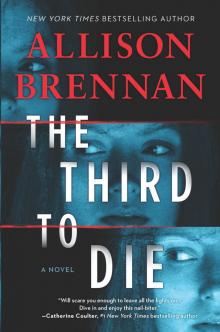 The Third to Die
The Third to Die Nothing to Hide
Nothing to Hide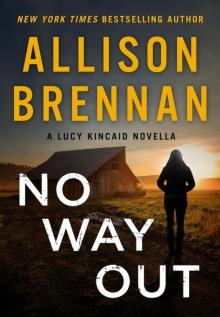 No Way Out
No Way Out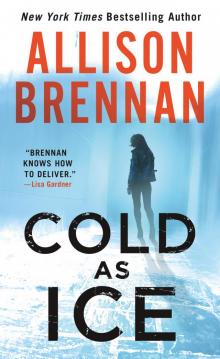 Cold as Ice
Cold as Ice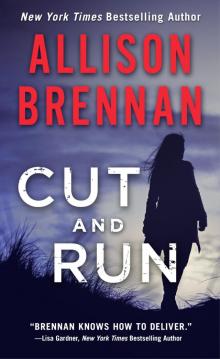 Cut and Run
Cut and Run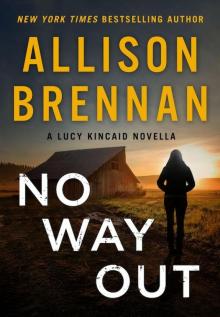 No Way Out (Lucy Kincaid Novels)
No Way Out (Lucy Kincaid Novels)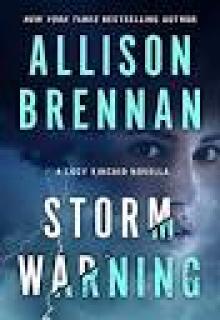 Storm Warning
Storm Warning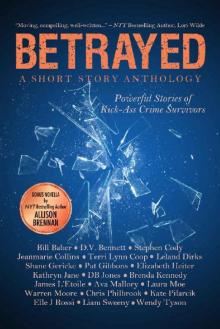 Betrayed: Powerful Stories of Kick-Ass Crime Survivors
Betrayed: Powerful Stories of Kick-Ass Crime Survivors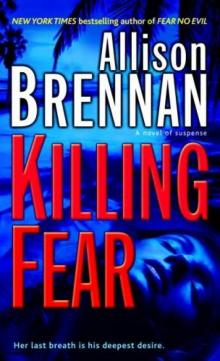 Killing Fear pb-1
Killing Fear pb-1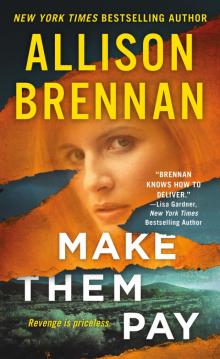 Make Them Pay
Make Them Pay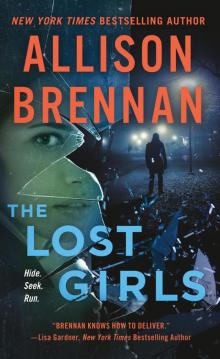 The Lost Girls
The Lost Girls Stalked
Stalked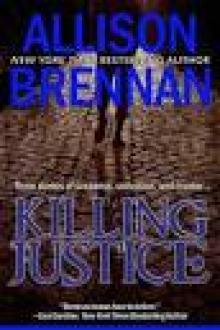 Killing Justice
Killing Justice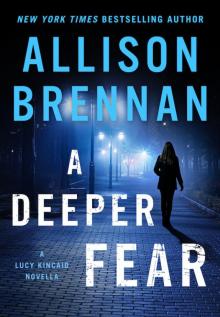 A Deeper Fear
A Deeper Fear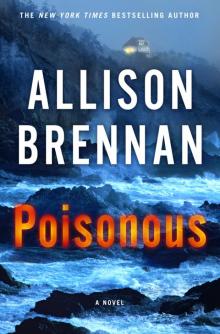 Poisonous
Poisonous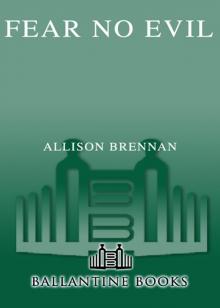 Fear No Evil
Fear No Evil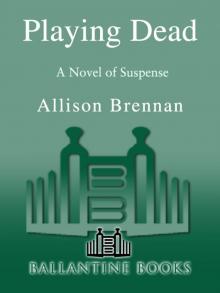 Playing Dead
Playing Dead Cold Snap
Cold Snap Vacation Interrupted
Vacation Interrupted Frosted (Moreno & Hart Mysteries)
Frosted (Moreno & Hart Mysteries)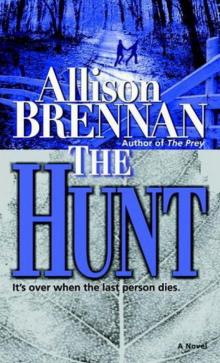 2 - The Hunt
2 - The Hunt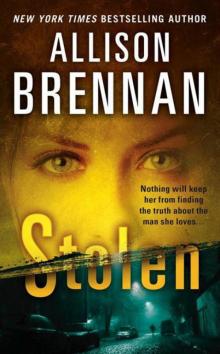 Stolen
Stolen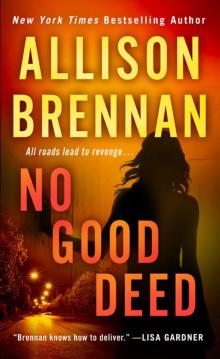 No Good Deed
No Good Deed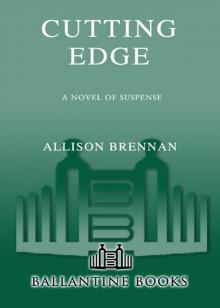 Cutting Edge
Cutting Edge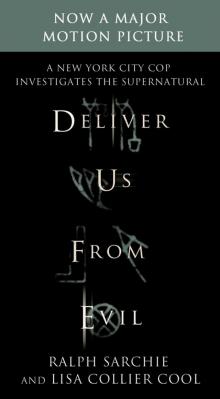 Deliver Us from Evil
Deliver Us from Evil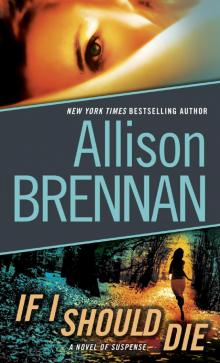 If I Should Die
If I Should Die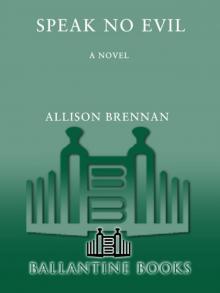 Speak No Evil
Speak No Evil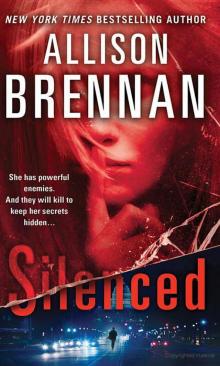 Silenced lk-4
Silenced lk-4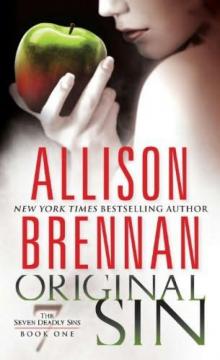 Original Sin sds-1
Original Sin sds-1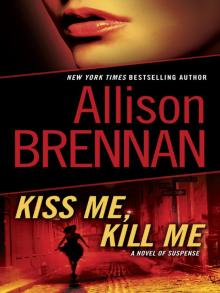 Kiss Me, Kill Me lk-2
Kiss Me, Kill Me lk-2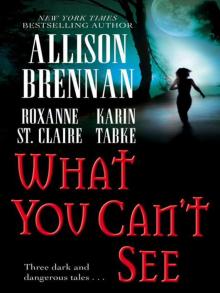 What You Can’t See
What You Can’t See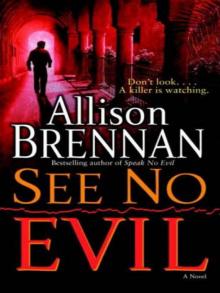 See No Evil
See No Evil The Prey
The Prey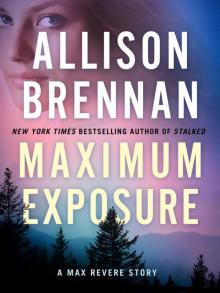 Maximum Exposure
Maximum Exposure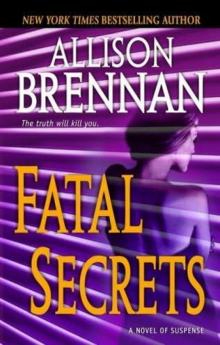 Fatal Secrets f-2
Fatal Secrets f-2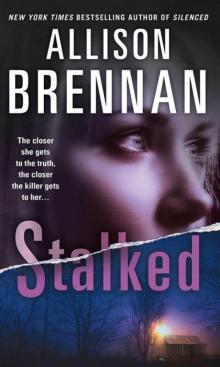 Stalked lk-5
Stalked lk-5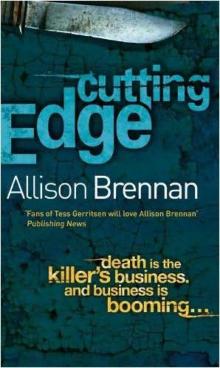 Cutting Edge f-3
Cutting Edge f-3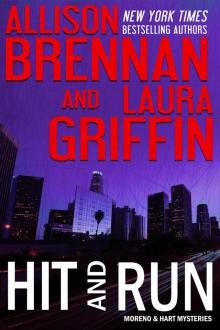 Hit and Run (Moreno & Hart Mysteries)
Hit and Run (Moreno & Hart Mysteries) Sudden Death f-1
Sudden Death f-1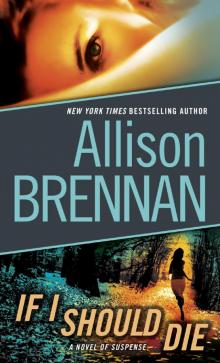 If I Should Die lk-3
If I Should Die lk-3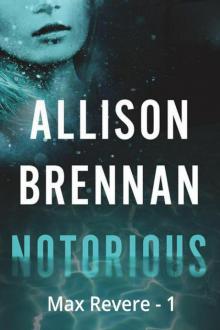 Notorious
Notorious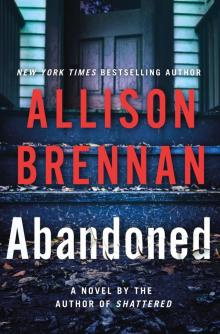 Abandoned
Abandoned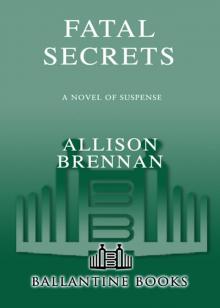 Fatal Secrets
Fatal Secrets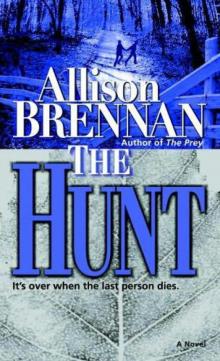 The Hunt
The Hunt Carnal Sin sds-2
Carnal Sin sds-2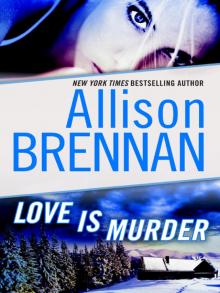 Love Is Murder
Love Is Murder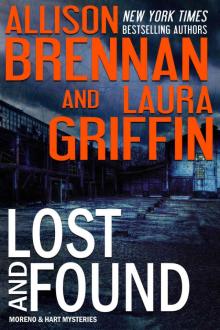 Lost and Found
Lost and Found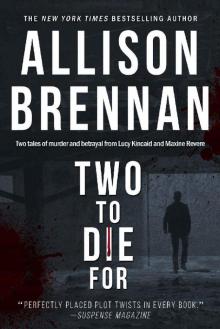 TWO TO DIE FOR
TWO TO DIE FOR Breaking Point
Breaking Point Best Laid Plans
Best Laid Plans Carnal Sin
Carnal Sin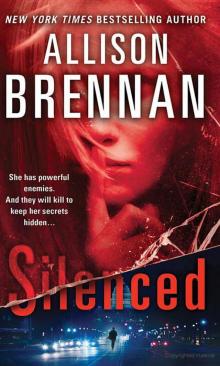 Silenced
Silenced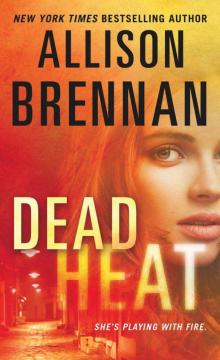 Dead Heat
Dead Heat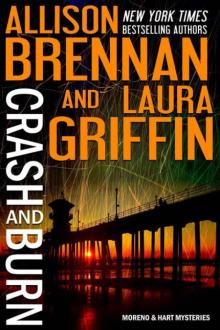 Crash and Burn
Crash and Burn Sudden Death
Sudden Death Lucy - 05 - Stalked
Lucy - 05 - Stalked Mortal Sin
Mortal Sin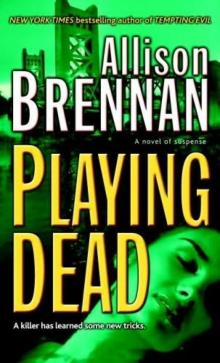 Playing Dead pb-3
Playing Dead pb-3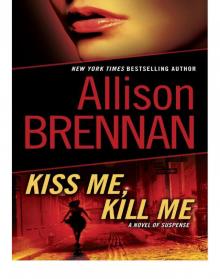 Kiss Me, Kill Me
Kiss Me, Kill Me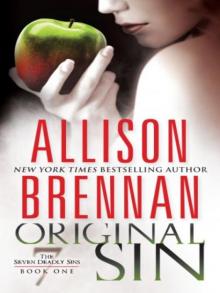 Original Sin: The Seven Deadly Sins
Original Sin: The Seven Deadly Sins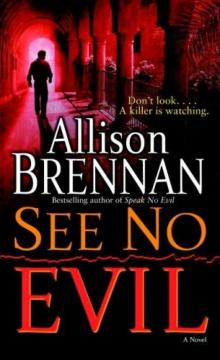 See No Evil e-2
See No Evil e-2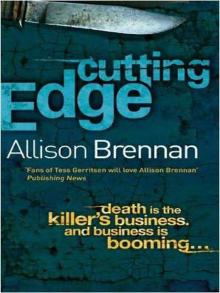 Cutting Edge: A Novel of Suspense
Cutting Edge: A Novel of Suspense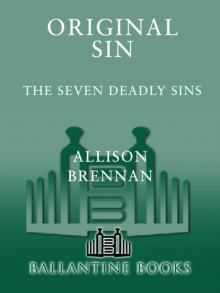 Original Sin
Original Sin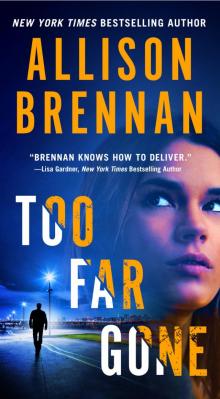 Too Far Gone
Too Far Gone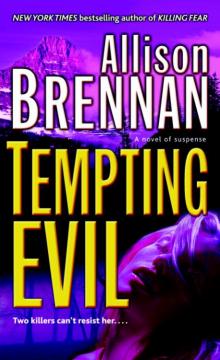 Tempting Evil
Tempting Evil Shattered
Shattered Killing Fear
Killing Fear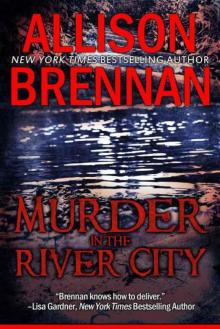 Murder in the River City
Murder in the River City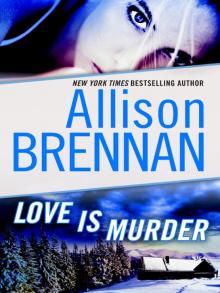 Love Is Murder (lucy kincaid)
Love Is Murder (lucy kincaid)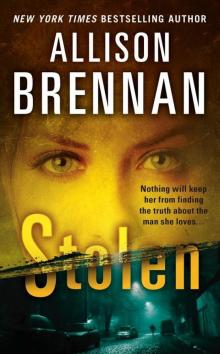 Stolen (Lucy Kincaid Novels)
Stolen (Lucy Kincaid Novels)